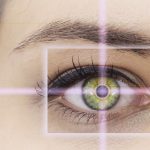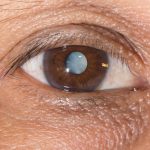Hyperopia (Farsightedness)

If you struggle to see objects up close, you might have a condition called hyperopia. Also referred to as farsightedness, hyperopia is a common refractive error that affects roughly 5 to 10 percent of Americans. (It’s not as common as myopia, a refractive error marked by poor distance vision and good near vision.)
Check out the following video for a basic hyperopia overview, or continue reading below for details related to what causes hyperopia, its signs and symptoms, treatments, etc.
What Causes Hyperopia?
Hyperopia occurs when light entering the eye is focused behind the retina, rather than directly onto it. This focal abnormality occurs when the eyeball is too short and results in blurred near vision.
Like myopia, hyperopia can present at a young age. However, unlike myopia, hyperopic children can potentially “grow out” of the condition if their eyeballs continue to develop towards a normal length. (The majority of hyperopic patients are adults.)
In addition to the length of the eyeball, hyperopia can also be caused by abnormalities in the shape of the cornea or lens.
Are You Farsighted? Signs & Symptoms
A hyperopia diagnosis can be confirmed through a routine eye exam. Hyperopic prescriptions have a value preceded by a plus sign (+). The higher the number, the more severe the hyperopia.
In addition to causing blurred near vision, there are other signs and symptoms of hyperopia, including:
- Headaches
- Eye strain
- Squinting
Hyperopic people may also experience fatigue when reading or performing other tasks that involve work at close range.
Although there are similarities, these signs and symptoms should not be confused with another refractive error called presbyopia.
Hyperopia vs. Presbyopia
It’s understandable that there is some confusion between hyperopia and presbyopia given that presbyopia also causes blurred near vision. However there are some key differences between the two, chief among which is cause.
As stated above, hyperopia most often occurs with shorter-than-normal eyeballs and is often present during childhood. Presbyopia is an age-related condition typically affecting people over the age of 40. As the eye ages, the lens becomes less flexible, which can inhibit its ability to focus on near objects. Hyperopic people never have the ability to focus up close, whereas presbyopic people typically are able to focus up close when they are younger than age 40 or 45. Presbyopic people lose the ability with age.
Another key difference between the two near vision conditions is that hyperopia only affects a segment of the population, whereas everyone will develop presbyopia at some point in their life.
(Check out our slideshow on 7 treatments for presbyopia correction.)
Treatments for Hyperopia
The most common solution for improving hyperopic near vision is with corrective eyeglasses or contact lenses. Light entering the eye is refocused by the lenses so that it correctly lands directly on the retina. Depending on the severity, corrective eyewear may be needed at all times.
For those looking for a solution that doesn’t involve corrective eyewear, refractive surgeries like LASIK can be used to reshape the cornea to adjust focal ability. Conductive keratoplasty (CK) is another option for reshaping the cornea. Unlike LASIK, CK is a non-surgical approach, and instead reshapes the cornea via a handheld probe used to administer radio waves. CK is typically performed on one eye, so that one caters to near vision while the other eye caters to distance vision. This is called monovision. CK has become less popular over the last few years as the technology for hyperopia LASIK surgery has improved.
Schedule a Consultation
If you are having trouble reading, working on a computer of performing other close-object tasks, schedule a consultation with an eye doctor for a comprehensive exam. If hyperopia is the root cause, the doctor can help develop a custom treatment plan best suited to your vision needs.
If you have already been diagnosed and are looking for an experienced surgeon for treatment, check out our list of providers nearest you.




